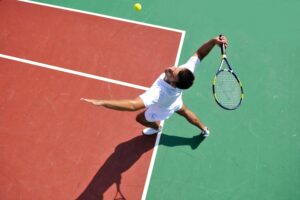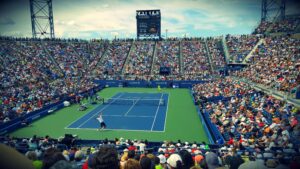Building the Foundation for a Strong Player/Coach Relationship
Coaching changes in tennis, especially at the highest level, are all too common within the sport. While many players justify these changes based on a lack of results, the truth of the matter is that a faulty player-coach relationship is often the primary reason for the split.
According to WTA Tour coach Vladimir Platenik of the EMPIRE Tennis Academy, the key to maintaining the player-coach relationships is being devoted to understanding both the athlete’s playing style and how they respond to certain coaching techniques.
Although he is a proponent of customizing coaching techniques based on the needs of each individual player, Platenik also urges coaches to stick to the core principles that have been successful throughout the course of their careers. At the end of the day, if the coach does not believe wholeheartedly in what they are teaching, the results will never be successful.
With a vast amount of coaching experience at the professional level, coaching players such as Dominika Cibulkova, Yanina Wickmayer, Nadia Petrova, and Ajila Tomljanovic, Platenik has also learned that coaches should constantly strive to learn and improve in order to build effective relationships with their players.
“I believe it is important to be a part of a coaches community so you are able to meet and discuss improvements,” said Platenik. “Tennis is a very difficult sport because everyone is fighting their opponents on the court, but at the end of the day, we are in the same boat and shouldn’t fight each other in unfair ways. We should be united, just as the players should be united.”
With these general principles in mind, Platenik is not necessarily concerned with the ranking of a player when they approach him looking for a coach, he is more concerned with their respect and love for the game. For Platenik, heart will always outweigh talent.
“In a player-coach relationship, I look first and foremost for the will to work hard and the love of tennis,” he explained. “I look for will because we can always work on the technique, the fitness and the mental components.”
After a two-month trial period, where both Platenik and his player determine if the relationship will be successful, he focuses heavily on developing a complete game for the athlete. “I always first try to find the player’s weapon, and then I build the game to perfection,” he said. “First, we develop the game that is natural for the player, then we work on Plan B. I really try to develop every player to have an all-around game.”
In developing the all-around game, Platenik teaches his players that there is always room for improvement, no matter how high their ranking may be. “Even if you are a top player, you can still improve. A lot of players believe that when they reach the top-100, top-50, top-10, they no longer have to listen to what they are doing wrong, and then they end up getting stuck in that position,” he said.
In order to continuously improve on the court, Platenik urges his players to always look forward to their future goals. Just as a track athlete works for a year to improve a mere one-hundredth of a second, tennis players must understand that the process takes time.
In a world where instant gratification is more prevalent than ever, players must learn to trust in the process. But above all, both parties should strive to continuously invest in the player-coach relationship.








Comments: 0